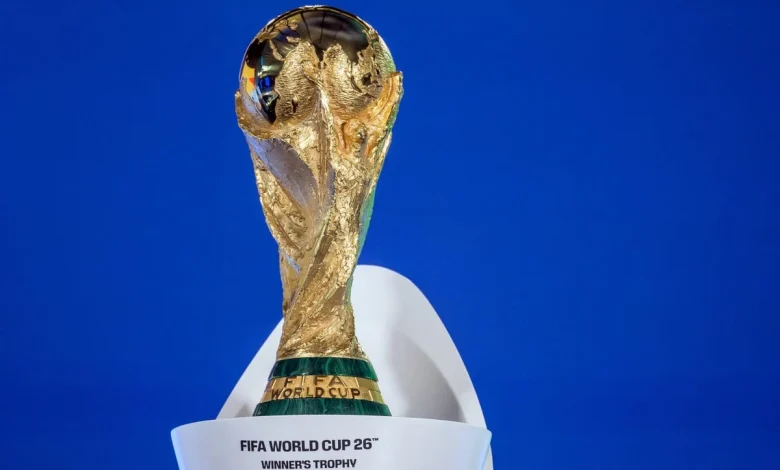World Cup 2026: The 20 qualification spots still up for grabs in November and March – The Athletic

The 2026 men’s World Cup will consist of 48 teams for the first time, and 28 nations have already qualified for the tournament.
With just over seven months to go until the finals — hosted by the United States, Canada and Mexico — there are 20 spots still to be decided across the next two international breaks.
A further 14 teams will qualify for the World Cup this month, with four more European countries joining them in March. Six teams will also contest March’s inter-confederation play-offs, with two progressing in a last chance for nations that missed out on direct qualification.
Here, The Athletic looks back at the story of qualifying in each confederation and ahead to what is on the line in November and March.
UEFA
UEFA are the only confederation that will not send a team to the inter-confederation play-offs, but there is still much to be decided in this month’s window.
Europe has historically been allocated the most slots at the World Cup, and the expansion from a 32- to a 48-team tournament sees the number go from 11 to 16.
In the qualification phase, nations were divided into six groups of four and six groups of five teams, with the group winners qualifying automatically. England are the only European team to have already secured their spot in the finals.
England secured their place at the World Cup with a 5-0 win over Latvia in October (Carl Recine/Getty Images)
Once the other 11 group winners have been decided, all 12 group runners-up will move on to the second round of qualifying. They will be joined by the four highest-ranked 2024-25 Nations League group winners that finished outside the top two of their qualifying group (based on their Nations League interim overall ranking).
Wales, Romania, Sweden and Northern Ireland are currently the four teams occupying these spots.
The 16 teams are then divided into four pathways, each consisting of single-leg semi-finals and a final, to be played on March 26 and 31 respectively. The matches will be decided by seeding pots in line with FIFA rankings, with teams from pot one facing teams from pot four, and teams from pot two playing a team from pot three in the semi-finals. The higher seeds will play at home.
The winners of the four finals will advance to the World Cup.
CAF
African teams were split into nine groups of six, with group winners automatically qualifying for the World Cup. The group stage concluded in October, with Algeria, Cape Verde, Ivory Coast, Egypt, Ghana, Morocco, Senegal, South Africa and Tunisia sealing places at the tournament.
Only one team will represent CAF in the inter-confederation play-offs, with Nigeria, Gabon, DR Congo and Cameroon — the group stage’s four best second-placed teams — battling it out for that right.
Like the UEFA play-offs, the teams will play in semi-finals and a final. Nigeria will play Gabon, and Cameroon face DR Congo on November 13, with the winners playing in the final on November 16. The matches will be held at Moulay Hassan Stadium and Al Barid Stadium respectively in the Moroccan capital of Rabat.
The victors will then move on to the inter-confederation play-offs.
AFC
Eight AFC teams have qualified for the World Cup: Japan, Australia, Iran, South Korea, Saudi Arabia, Qatar, Uzbekistan and Jordan — with the latter two set to play at the tournament for the first time.
After the competition’s expansion, Asia’s complex qualifying system consists of five rounds.
The first round saw teams ranked 27 to 46 drawn into 10 home-and-away ties, with the winners moving on to the second round, where they joined teams ranked one to 26.
The 36 teams were divided into nine groups of four countries, with group winners and runners-up advancing to the third round. Here, the remaining 18 teams were split into three groups of six, with the top two teams in each group qualifying for the World Cup.
The fourth round saw the third and fourth-placed teams from the third round groups divided into two further groups, with the winners then qualifying.
This, eventually, brings us to this month, when the United Arab Emirates and Iraq — who finished as runners-up in the fourth round — will play each other over two legs for the right to represent the AFC in the inter-confederation play-offs.
The UAE are looking to qualify for the World Cup for the second time in the nation’s history (Mohamed Farag/Getty Images)
CONCACAF
The U.S., Canada and Mexico qualified as hosts, with three more automatic spots on the line in November.
The first round of qualifying saw the four lowest-ranked CONCACAF sides drawn into two home-and-away ties, with the two winners joining the other 28 teams (not including the three host nations) in the second round, where they were split into six groups of five.
The top two in each group moved on to the third round — three groups of four, with the winners qualifying.
Heading into November’s fixtures, Suriname, Jamaica and Honduras are in pole position to qualify automatically. The two best runners-up will play in the inter-confederation play-offs.
OFC and CONMEBOL
Both confederations have completed their qualifying processes.
The OFC was given an automatic qualification slot for the first time, which New Zealand secured after three rounds of qualifying. The final round was a four-team mini tournament with two semi-finals and a final, where New Zealand came out victorious over New Caledonia, who will play in the inter-confederation play-offs.
New Zealand qualified automatically for the first time (David Rowland/AFP via Getty Images)
CONMEBOL kept the same qualifying structure as in previous years, with all 10 teams playing each other home and away in a round-robin format.
Argentina, Colombia, Uruguay, Brazil, Paraguay and Ecuador qualified as the top six, with seventh-placed Bolivia representing South America in March’s play-offs.
How do the inter-confederation play-offs work?
Once the four teams joining New Caledonia and Bolivia have been confirmed, they will be split into seeded and unseeded teams and into two separate pathways. The two highest FIFA-ranked sides will be seeded and move straight on to the final of each pathway.
The unseeded teams will play in a pair of single-leg semi-finals, held in North America. The two winners will then take on the two seeded sides, with winners securing the 47th and 48th spots in the largest World Cup field ever.
The matches will take place in March 2026, though exact dates and venues have yet to be confirmed.





